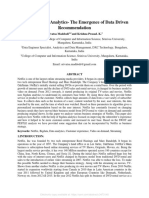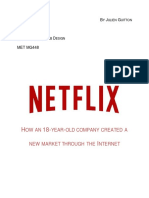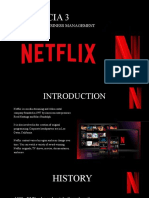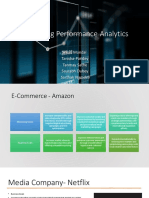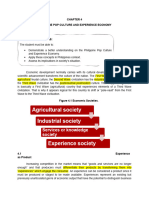0% found this document useful (0 votes)
48 views4 pagesNetflix Case Study
Netflix, founded in 1997, has evolved from a DVD rental service to a leading global streaming platform with over 230 million subscribers, utilizing data analytics and AI to enhance user engagement and retention. Its Subscription Video on Demand model and strategic milestones, including the introduction of ad-supported plans and original content, showcase its adaptability and data-driven growth. Despite facing competition and rising production costs, Netflix's use of AI for personalized recommendations, predictive analytics, and targeted marketing campaigns provides a competitive advantage in the streaming industry.
Uploaded by
chandnimunrejsCopyright
© © All Rights Reserved
We take content rights seriously. If you suspect this is your content, claim it here.
Available Formats
Download as PDF, TXT or read online on Scribd
0% found this document useful (0 votes)
48 views4 pagesNetflix Case Study
Netflix, founded in 1997, has evolved from a DVD rental service to a leading global streaming platform with over 230 million subscribers, utilizing data analytics and AI to enhance user engagement and retention. Its Subscription Video on Demand model and strategic milestones, including the introduction of ad-supported plans and original content, showcase its adaptability and data-driven growth. Despite facing competition and rising production costs, Netflix's use of AI for personalized recommendations, predictive analytics, and targeted marketing campaigns provides a competitive advantage in the streaming industry.
Uploaded by
chandnimunrejsCopyright
© © All Rights Reserved
We take content rights seriously. If you suspect this is your content, claim it here.
Available Formats
Download as PDF, TXT or read online on Scribd
/ 4











